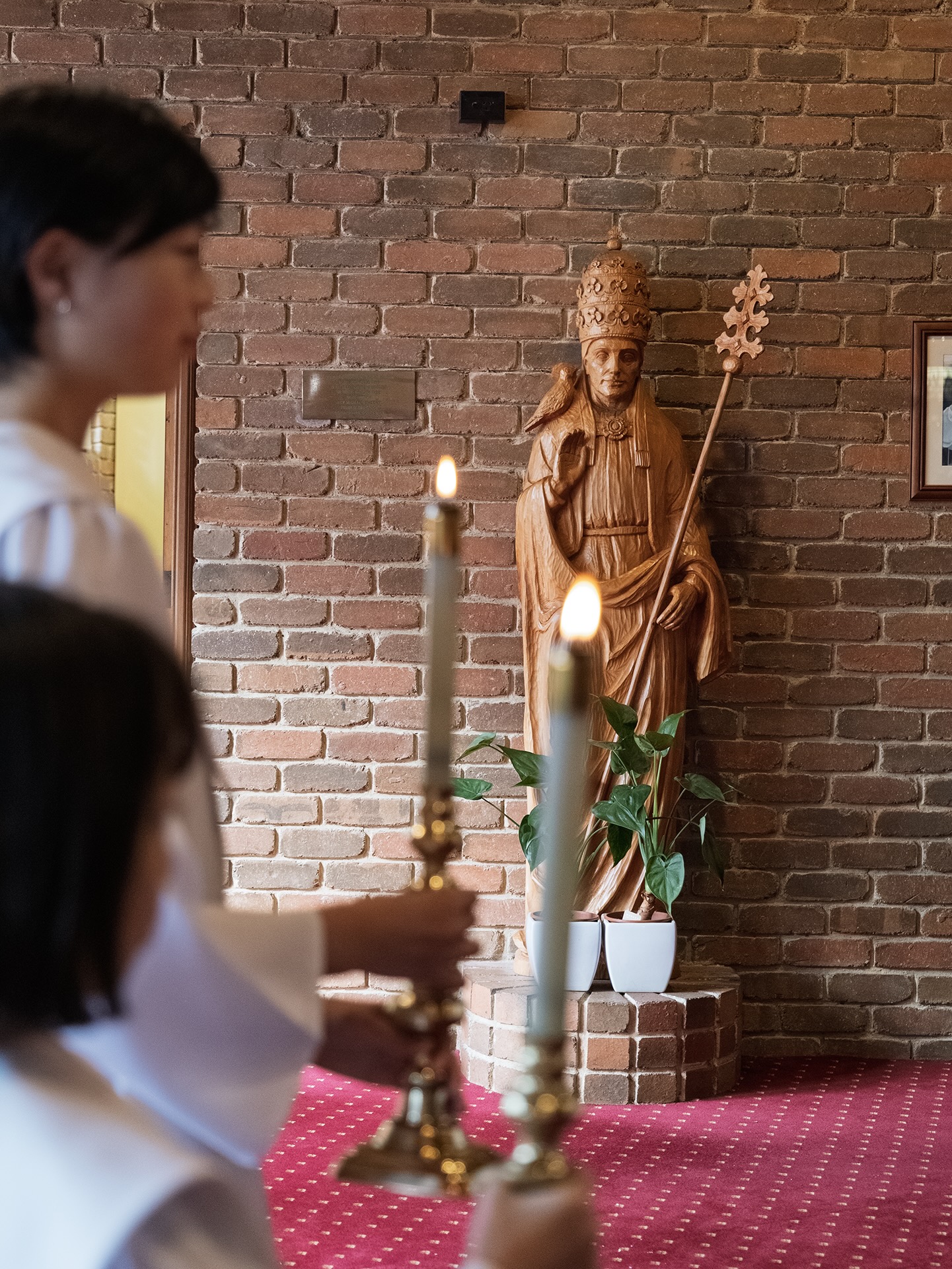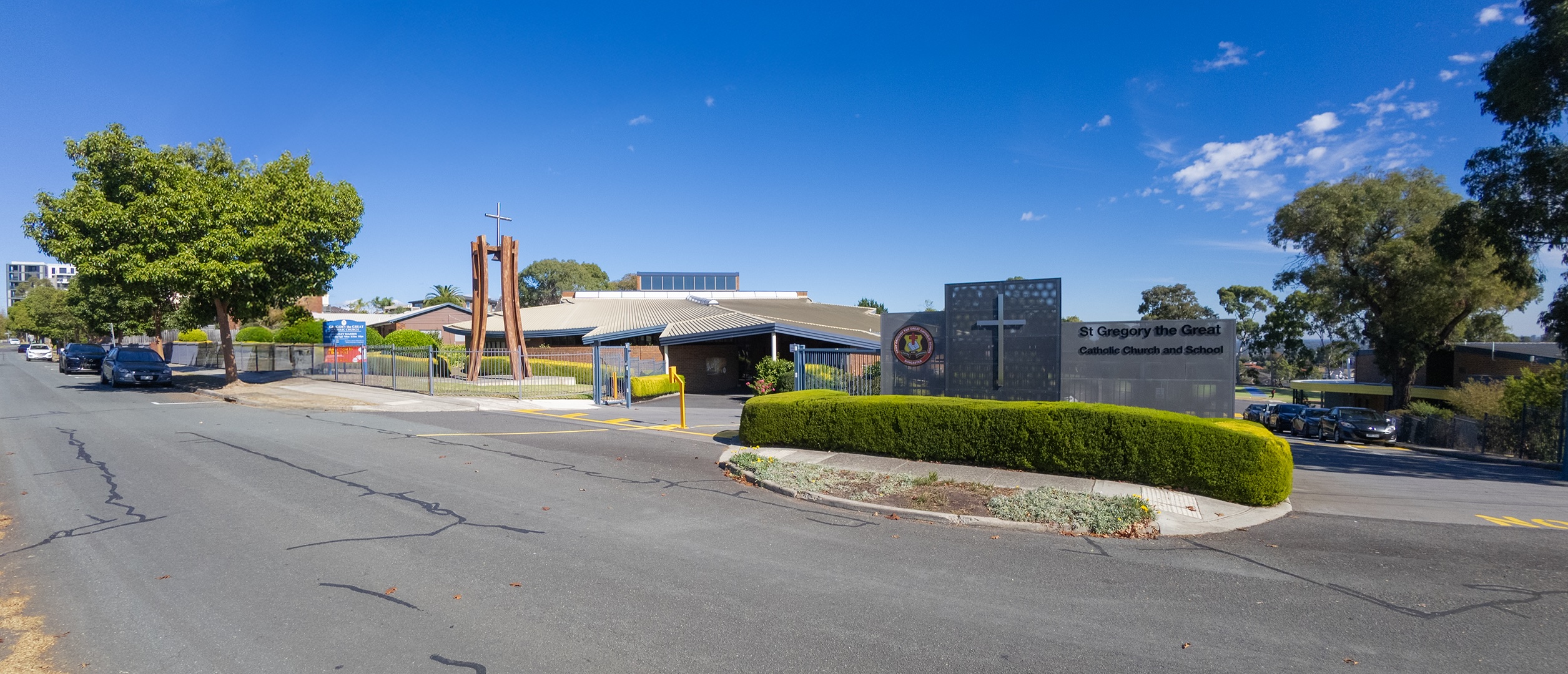
St Gregory the Great Catholic Parish, Doncaster
Nestled in the heart of Doncaster, Victoria, St Gregory the Great Catholic Parish is a vibrant and welcoming community with deep roots and a rich history. From humble beginnings in the orchards of Manningham Road to the thriving spiritual and social hub it is today, our parish has grown alongside the suburb it serves.
A Parish Born of Faith and Vision
In the 1960s, Doncaster was a quiet, semi-rural village, dotted with apple and pear orchards and far removed from the bustling city it would become. Amid this transformation, a vision took root — to create a parish that would nurture faith, community, and education.
The land on which our parish now stands was once a 12-acre orchard, purchased by the Diocese of Melbourne in the late 1950s. By 1967, Doncaster had become its own parish, named St Gregory the Great, in harmony with the “local” tradition of naming parishes after Popes and Evangelists; like St Peter and Paul’s Parish in Doncaster East.
Our early parishioners were pioneers — young families from across Melbourne and beyond, united by faith and a shared dream. Masses were first celebrated in borrowed spaces, and the community rallied together to build both a church and a school. Through sacrificial offerings, tireless fundraising, and unwavering spirit, the foundations of our parish were laid. Parishioners even cleared the land themselves — removing trees and, as legend has it, perhaps even 100 snakes — in a true labour of love.
A Church of Beauty, Symbolism, and Sacred Space
The church of St Gregory the Great, dedicated in 1983, is not only a place of worship but a profound expression of faith through architecture and art. Designed by architect Graeme Law and envisioned by Fr. Michael Sheehy, the church is a modern sacred space that invites reflection, reverence, and community.
The Calvary Walk and Lady Chapel
Entering from the car park, parishioners begin their spiritual journey through the Calvary Walk — a gently ascending path lined with the Stations of the Cross, symbolizing Christ’s Passion. Before this ascent, one encounters the Lady Chapel, a serene space for private prayer and devotion. Here, Our Lady holds a piece of fruit, a nod to the orchard land on which the church was built. The chapel also houses a bust of the Pope, a tabernacle, and cushioned seating with spiritual messages, offering a quiet sanctuary for reflection.
The Narthex and Easter Garden
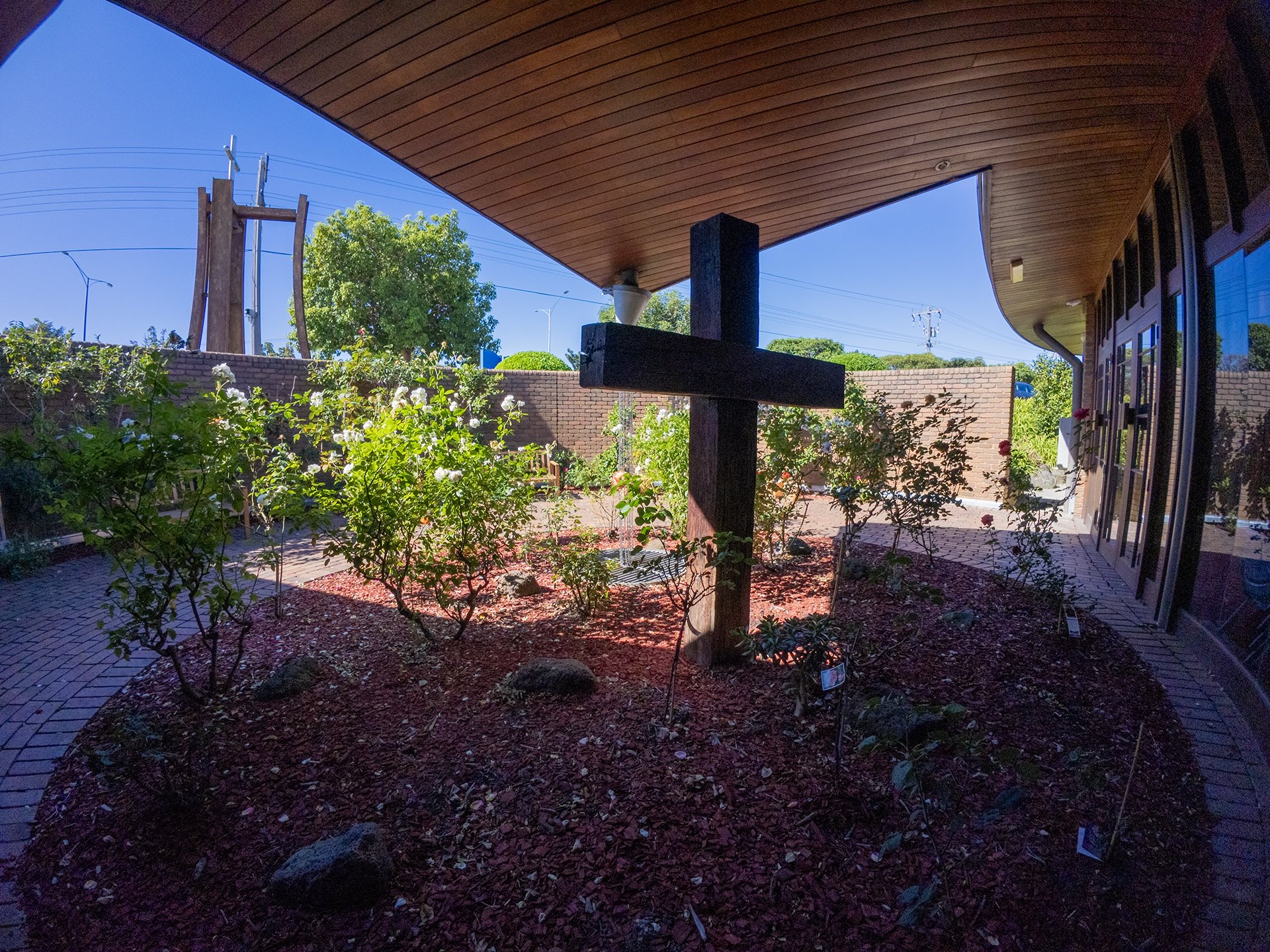
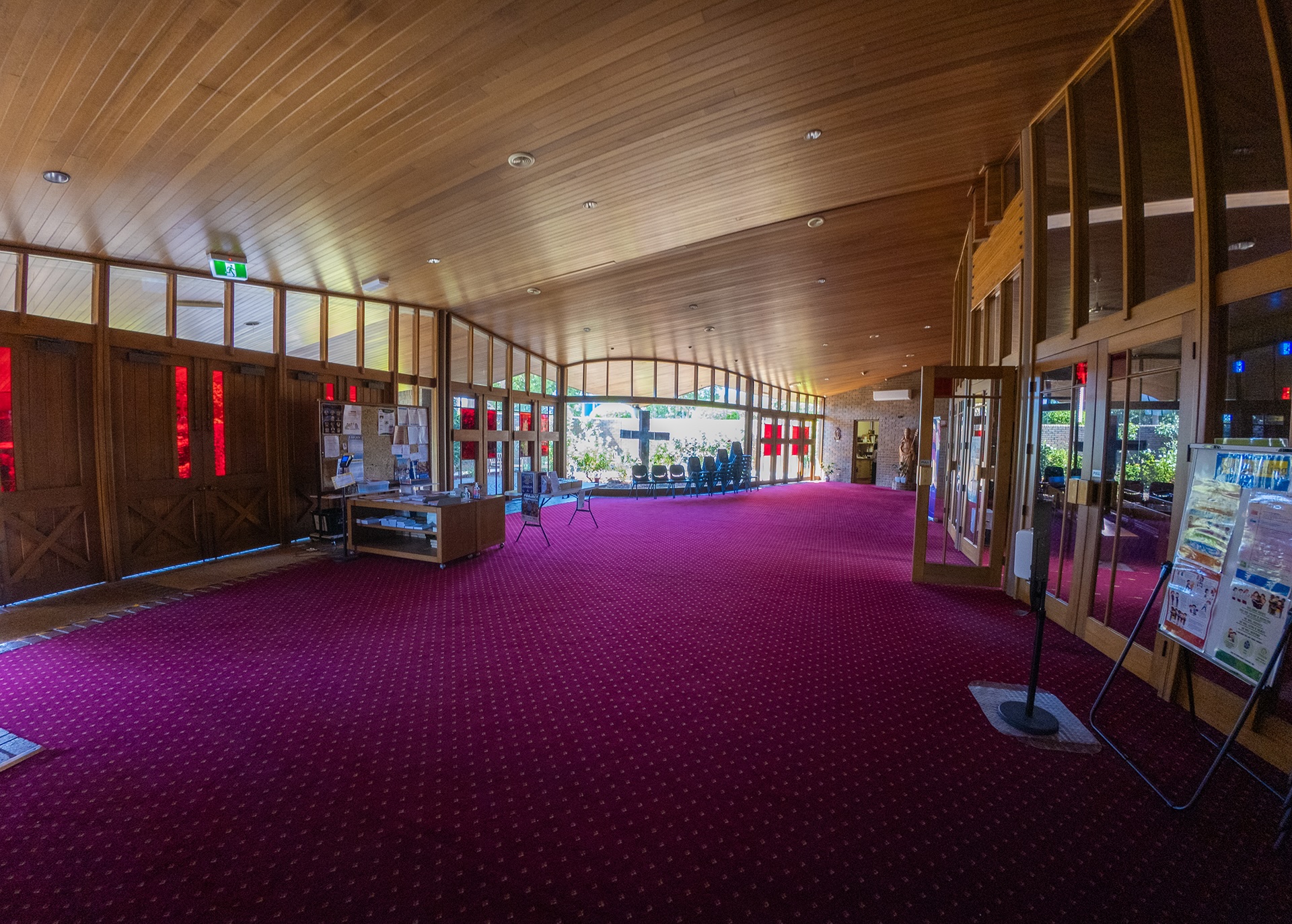
At the top of the Calvary Walk lies the Narthex, a peaceful gathering space that transitions worshippers from the outside world into the sacred. Beyond it lies the Easter Garden, where a large, rough wooden cross and a stone rolled away from the Holy Sepulchre evoke the Resurrection. This garden is also home to the Memorial Wall, where plaques commemorate beloved parishioners who have passed away — a sacred space of remembrance and hope.
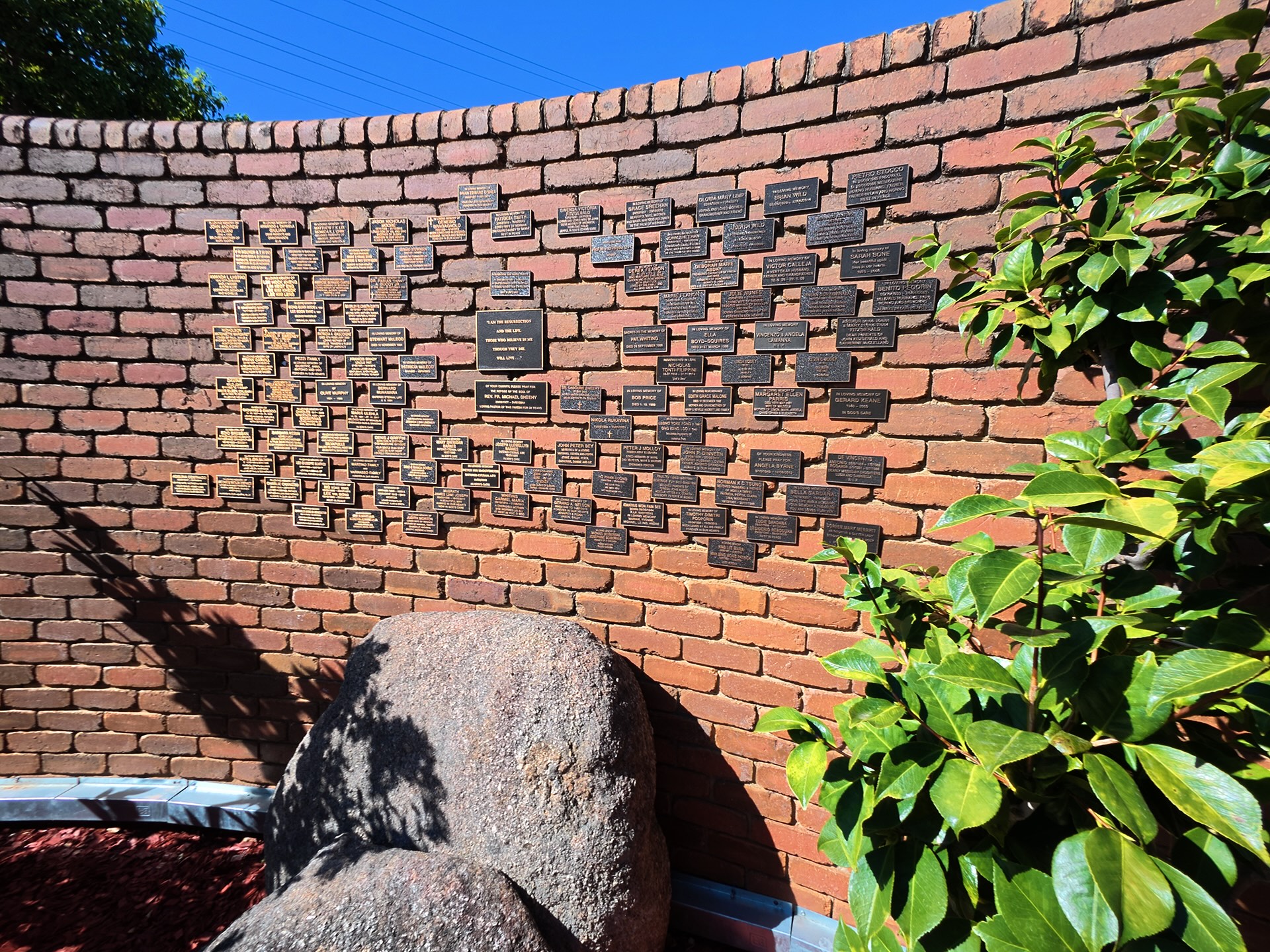
The Statue of St Gregory
Standing with quiet dignity in the Narthex is a two-metre statue of St Gregory the Great, carved from Huon pine by renowned sculptor Leopoldine Mimovich. This powerful figure welcomes all who enter and reminds us of the parish’s namesake — a Pope known for his wisdom, humility, and dedication to the Church.
The Sanctuary and Solar Hemicycle
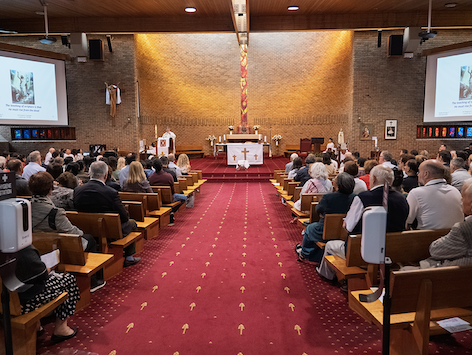
The Sanctuary, visible through a timber and glass screen, is the heart of the church. Its design lifts the spirit, with fine furnishings by Clive Bullen and luminous stained glass windows by Ernest Fries. The Solar Hemicycle, a semicircular architectural feature, allows natural light to flood the altar in the morning and the Calvary Walk in the afternoon, creating a dynamic interplay of light and sacred space.
Above the Tabernacle, the Holy Spirit window radiates with vibrant colours and tongues of fire, symbolizing divine presence. To the left, a crucifix of the Risen Lord, also by Mimovich, reminds us of the joy and hope of the Resurrection. The roof structure, shaped like a cross, and the semi-circular seating arrangement foster a sense of unity and shared worship.
Symbols of Faith and Life
Every detail in the church carries meaning — from the wheat and grape motifs representing the Eucharist, to the Baptistry with flowing water symbolizing new life in Christ. The lecterns flanking the altar emphasize the centrality of the Word of God in our liturgy.
A Sacred Space, A Living Faith
Every corner of St Gregory the Great Church tells a story — of faith expressed through architecture, of community built through shared sacrifice, and of a sacred space designed to draw hearts closer to God. From the orchard soil beneath our feet to the soaring cross above the sanctuary, the church is a living testament to the devotion of its people and the enduring presence of Christ among us.
As light pours through stained glass and footsteps echo along the Calvary Walk, we are reminded that this is more than a building — it is a house of God, lovingly shaped by generations past and joyfully embraced by those who gather here today. In its beauty, symbolism, and spirit, the church continues to inspire, comfort, and call us to deeper communion with one another and with the divine.
_______________
© June 2025
